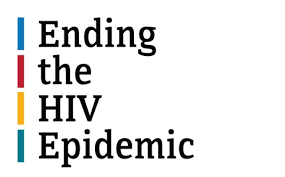This report originally appeared on hiv.gov. To view the full report, click here.
On Friday, 1/24/20, the CDC published a major funding opportunity designed to advance Ending the HIV Epidemic: A Plan for America. The plan was announced by President Trump during the State of the Union last year; and Congress recently approved funding for the initiative, which is being coordinated by the Office of the Assistant Secretary for Health. The resources will be infused into communities most impacted by HIV and provide a major boost to the bold initiative to reduce new HIV infections by 90% by 2030.
This five-year funding program is titled “Integrated HIV Programs for Health Departments to Support Ending the HIV Epidemic in the United States (PS20-2010).” First-year awards are expected to total approximately $109 million.
This funding opportunity can help end this epidemic by infusing communities with the resources, technology, and expertise needed to strengthen HIV prevention and treatment. To achieve maximum impact, the funding targets geographic areas that account for more than half of new HIV diagnoses, and states with a substantial rural burden. In recent months, each of these jurisdictions has developed a comprehensive Ending the HIV Epidemic plan, informed by consultations with diverse stakeholders and community-level input.
The new funding opportunity includes three components:
- Component A (up to 32 awards) will help state, local, and territorial health departments scale up four strategies that can end the epidemic: diagnosing all people with HIV as early as possible; treating people with HIV rapidly and effectively to reach sustained viral suppression; preventing new HIV transmissions with proven interventions, including PrEP and syringe services programs; and responding quickly to potential outbreaks to get needed prevention and treatment services to people who need them.
- Component B (up to 8 awards) will fund health departments to use routinely collected HIV surveillance data to calculate CD4-based HIV incidence estimates. These estimates will help communities plan, implement, and evaluate prevention and treatment programs.
- Component C (up to 8 awards) will allow health departments to scale up innovative HIV prevention services in STD clinics.
Details about the funding opportunity are available on CDC’s website. Applications are due on March 25, 2020 and the anticipated award will begin on June 1, 2020.
For more information about CDC’s role in Ending the HIV Epidemic, visit www.cdc.gov/endhiv.
You can also learn more about Ready, Set, PrEP, the new nationwide program that provides PrEP medications at no cost to thousands of individuals who qualify.
Read more here.








